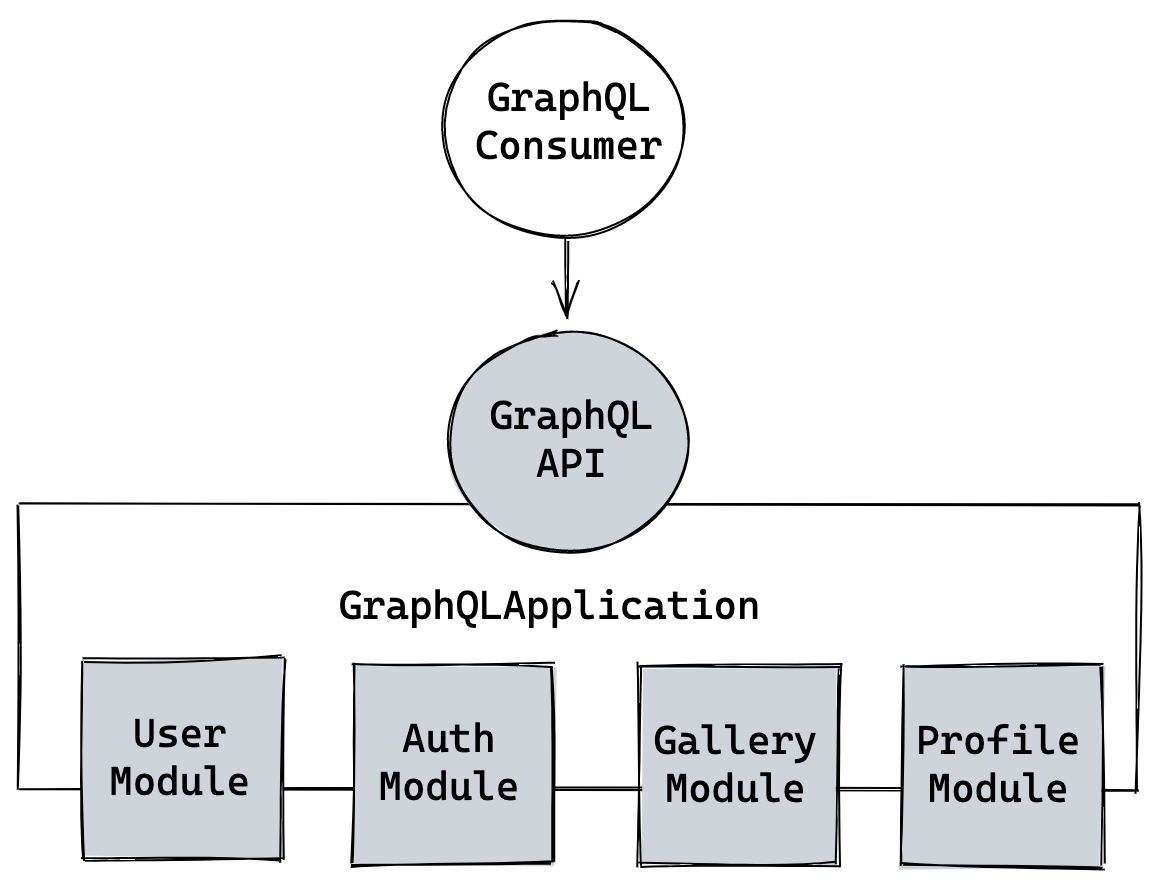Introduction
GraphQL Modules is a utility library, that allows you to separate your GraphQL schema implementation into small, reusable, easy-to-implement and easy-to-test pieces.
In GraphQL Modules, each module has its GraphQL type definitions and resolver implementations.
The idea behind this is to implement the Separation of Concerns design pattern in GraphQL and to allow you to write simple modules that only do what they need to. This way, they’re easier to write, maintain and test.
During development, GraphQL-Modules allows you to separate your GraphQL schema definitions, while at runtime, you’ll be able to serve a unified schema.
Structure
Each GraphQL module is built using the basics of GraphQL:
- Type definitions
- Resolver functions
As your application grows, modules can use Dependency Injection, if you wish to separate your resolvers and your business logic.
The structure of GraphQL API with GraphQL Modules is flat. Modules are on the same level and there’s Application on top of them.
Example
To get a better understanding of the structure and extensibility of modules, let’s make an example app with four modules:
- User (define what a user in our app should have)
- Authentication (define only what is needed to authenticate users)
- Profile (define a user’s profile)
- Gallery (define a user’s photo gallery)

Let’s understand how to define each module’s schema and how to separate it into smaller pieces.
Each one of our modules contributes a small part of the schema, and the GraphQL Application merges it into a complete schema.
User Module
This module allows querying users by id and defines only the very basic fields.
type Query {
user(id: ID!): User
}
type User {
id: ID!
email: String!
}Authentication Module
This module declares the authentication basics in Mutation, Query and User types.
extend type Query {
me: User
}
type Mutation {
login(username: String!, password: String!): User
signup(username: String!, password: String!): User
}
extend type User {
username: String!
}Profile Module
The profile module declares the Profile type and adds the profile field to User:
type Profile {
age: Int!
name: String!
}
extend type User {
profile: Profile!
}Gallery Module
The gallery module is similar to the profile module. It declares only the parts of the schema that are required by the gallery feature:
type Image {
id: ID!
url: String!
user: User!
}
extend type User {
gallery: [Image]
}
extend type Mutation {
uploadPicture(image: File!): Image
}